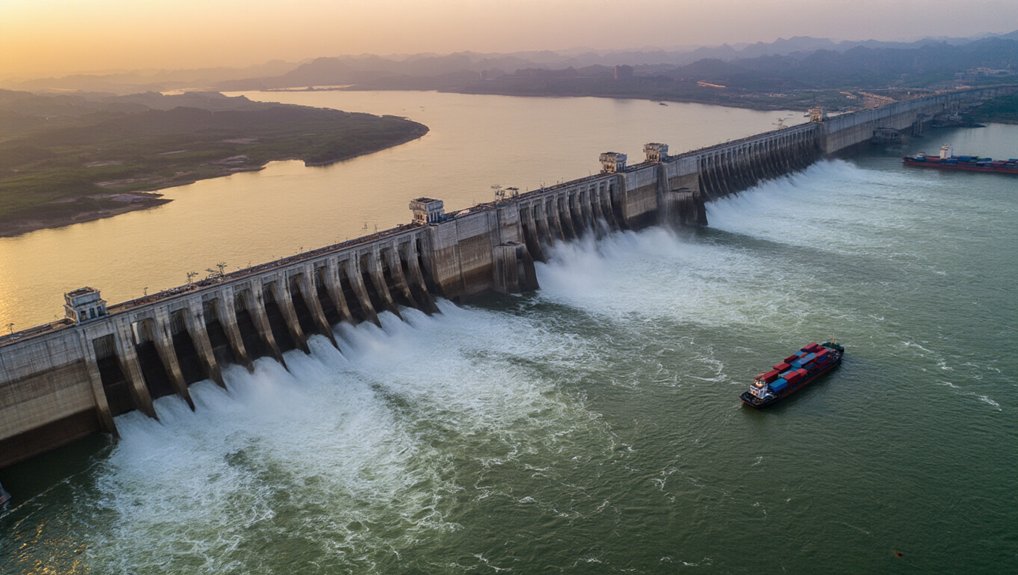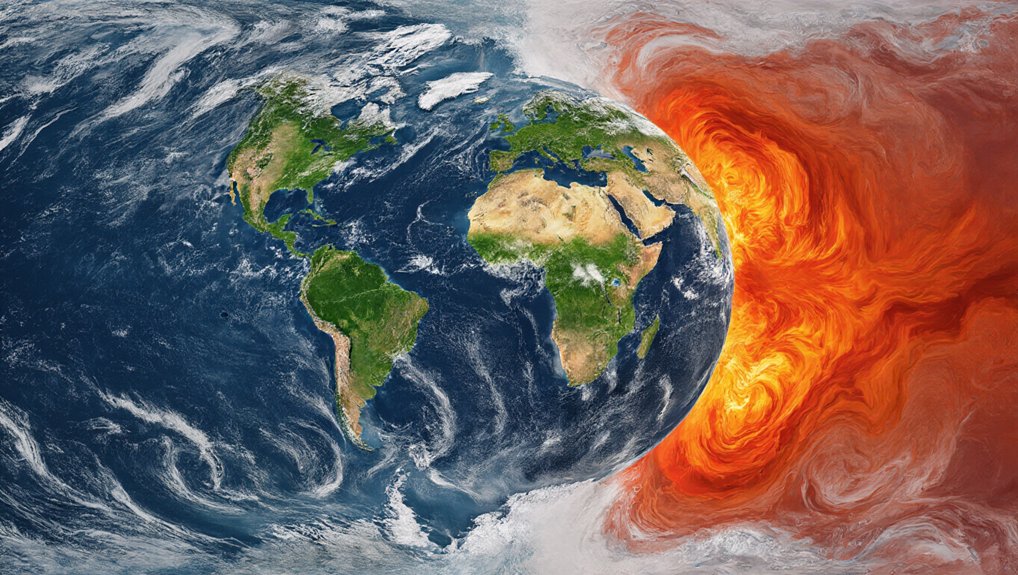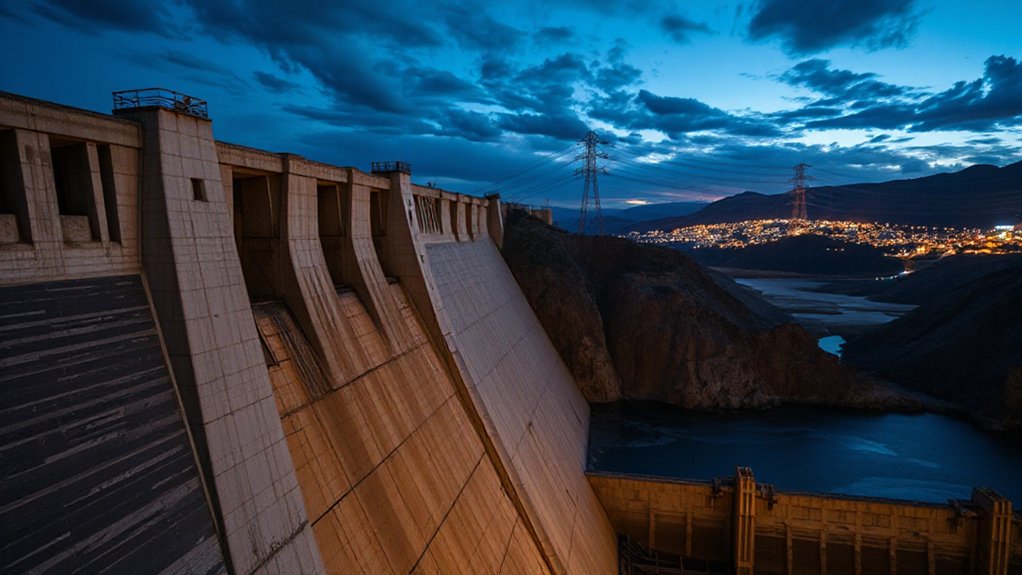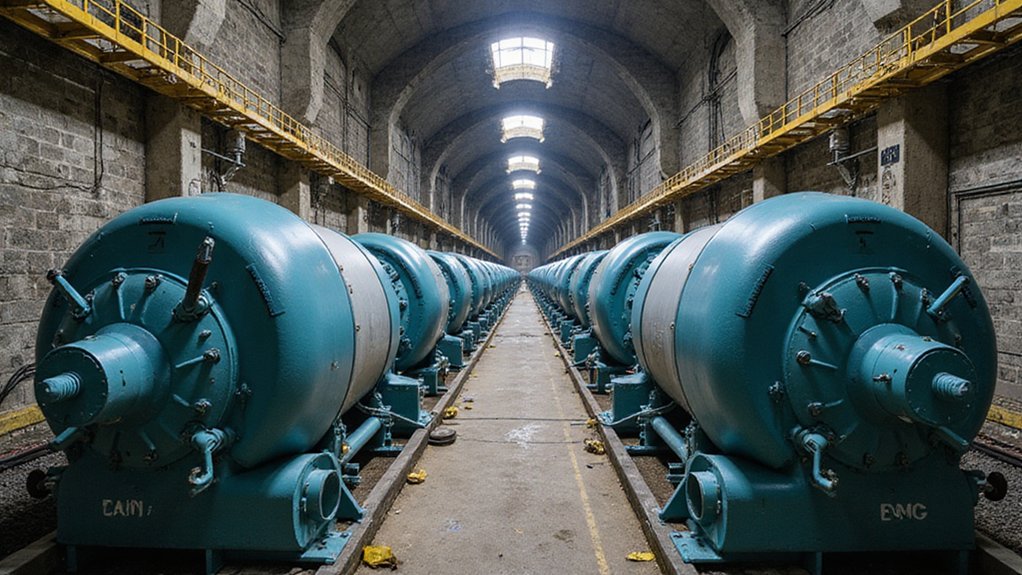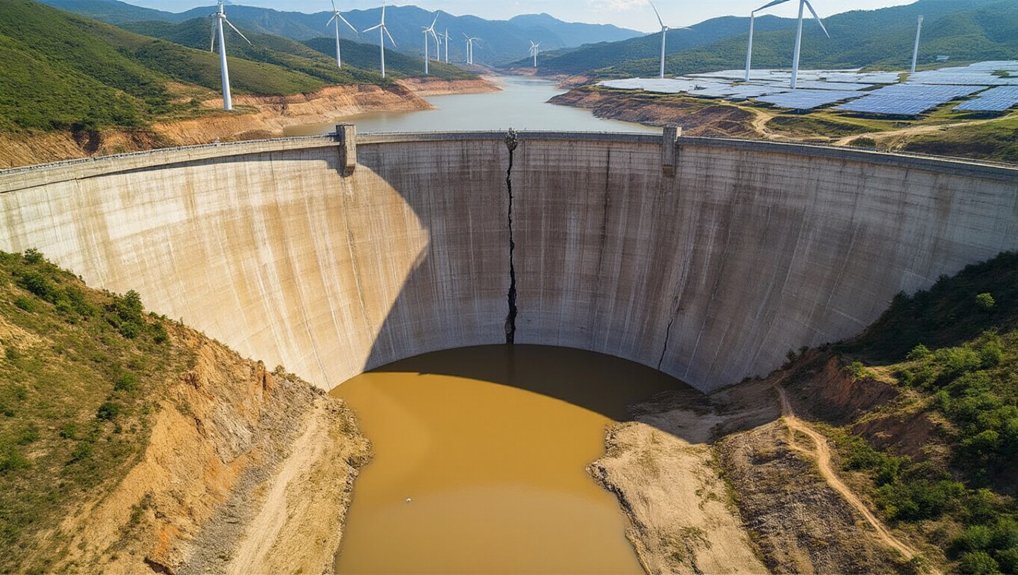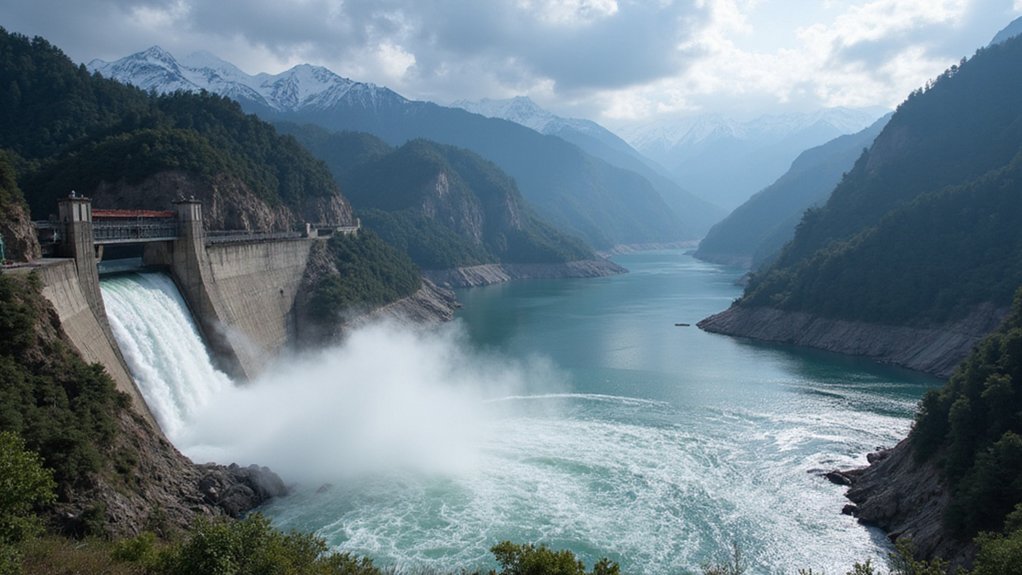When China decided to build the Three Gorges Dam, they weren’t messing around. This concrete monster pumps out 22,500 megawatts of raw power, making every other hydroelectric plant on Earth look like a backyard water wheel. To put that in perspective, the dam’s capacity equals roughly 13 to 22 modern nuclear reactors combined. Yeah, you read that right.
The numbers are almost stupid. In 2020, this single dam generated 111.8 billion kilowatt-hours of electricity. That’s more than triple what the biggest nuclear plants manage in a year. Japan’s Kashiwazaki-Kariwa nuclear facility, one of the world’s largest, produces about 30-32 TWh annually. Three Gorges? It’s cranking out power like it’s nothing.
Three Gorges crushes nuclear plants, generating triple the power of Japan’s biggest atomic facility.
At full throttle, this beast produces 0.54 TWh daily. That’s enough juice to power 5.4 million households for an entire month. Every. Single. Day. The facility runs 34 turbo-generators, including 32 main water turbines pushing 700 MW each. When monsoon season hits and water levels surge, all units fire up simultaneously. It’s like watching a hydroelectric symphony. The dam achieved full-load operation on August 30, 2021, with all 34 power units connected to the grid.
The environmental impact hits different than nuclear too. In 2021 alone, the dam’s operation meant China burned 31.76 million fewer tons of coal. That translates to 86.86 million tons of CO₂ that never made it into the atmosphere. Plus, there’s zero radioactive waste to worry about for the next 10,000 years. Nuclear plants can’t say that. But this massive project came at a cost, displacing at least 1.4 million people from their homes along the Yangtze River.
Sure, the dam only contributes about 1.43% to China’s total electricity generation. But for a single plant in a country that produced 7,779 TWh in 2020, that’s massive. Coal still dominates China’s energy mix, but this dam proves hydropower can deliver serious numbers.
The facility doesn’t just generate power either. It manages floods, improves shipping on the Yangtze River, and stabilizes the regional grid. Since 2020, it’s consistently pumped out over 100 billion kWh annually. As the world’s largest renewable electricity source, hydropower continues to demonstrate its crucial role in sustainable energy portfolios worldwide.
While the world debates nuclear versus renewable energy, China’s monster dam just keeps churning out electricity, making uranium plants look increasingly outdated.
References
- https://www.waterpowermagazine.com/news/three-gorges-project-operates-at-full-capacity-9074272/
- http://large.stanford.edu/courses/2022/ph240/yang2/
- https://www.renewableenergyworld.com/hydro-power/three-gorges-hydro-generated-more-than-103-6-billion-kwh-of-electricity-in-2021/
- https://singularityhub.com/2025/01/15/china-is-about-to-build-the-worlds-biggest-hydropower-dam-with-triple-the-output-of-three-gorges/
- https://www.ctg.com.cn/ctgenglish/news_media/news37/2024080621160591105/index.html
